Caboose numbers (quickly diverged to Tiffany Reefers)
Caboose numbers (quickly diverged to Tiffany Reefers)
|
This post was updated on .
I came across this photo while trying to determine whether a Beaver Brook stereo view on eBay was one I already had or not. I was going to title this thread "Caboose Number Mystery" after the recent "Mystery Rotary..." that turned out to be not so much of a mystery (thanks to Jerry Day), but in case this was obvious others or had already been discusses, I toned it down a bit. This photo of a Caboose was taken at Beaver Brook around 1885 (some cars show post-1885 numbers, some don't). I can't make out the caboose number, but it appears to have 3 digits. The DSP&P and CC waycars/cabooses were numbered with 2 digits before 1885 and 4 after. It's possible that it's a re-numbered caboose and the first digit (a "1") just isn't clear, but it really looks to be only 3 digits. The rest of the lettering is interesting, between the "CABOOSE" instead of "WAY CAR" on the sides, and the black lettering on the ligher colored body with what looks like white on the darker fascia. Any thoughts?
 The rest of the train are all DSP&P cars with an interesting mix of lettering styles, but the locomotive looks to be #155, which was CC.  This is a fairly modern copy print, and according to hand-written information on the back, is an Alex Martin photo from the Penrose Public Library. |
|
This post was updated on .
Neat photo, Todd.
This is the clearest image of this particular photograph that I've seen. I believe Derrell Poole wrote a series of articles for Outdoor Railroader, and discussed this photo in particular and how it fit into the caboose numbering scheme of the time. He might have also touched on it here, in his "Eight Wheel Caboose on the C&S?" thread as well. As to caboose color, it might well be painted in UP caboose yellow with maroon lettering and fascia, as on the end pieces uncovered on the 1006 restoration. That's a great photo of South Park freight cars--a DSP&P boxcar, two big Tiffany reefers, two Litchfield 26' boxcars and a pair of UP built 27 foot coal cars, with different side sills. Speaking of Tiffany Reefers, a while back you posted a beautiful high resolution enlargement of the C&S flanger 08 at the Washington Spur wreck of #60 and #70. Any chance that you have a high-res image of the two Tiffany cars, still in UP lettering, at the same wreck? I'm toying with the idea of building a couple of Leadville Shops kits to match, one in UP lettering the other in early C&S lettering. Jim
Jim Courtney
Poulsbo, WA |
Yes, a few. 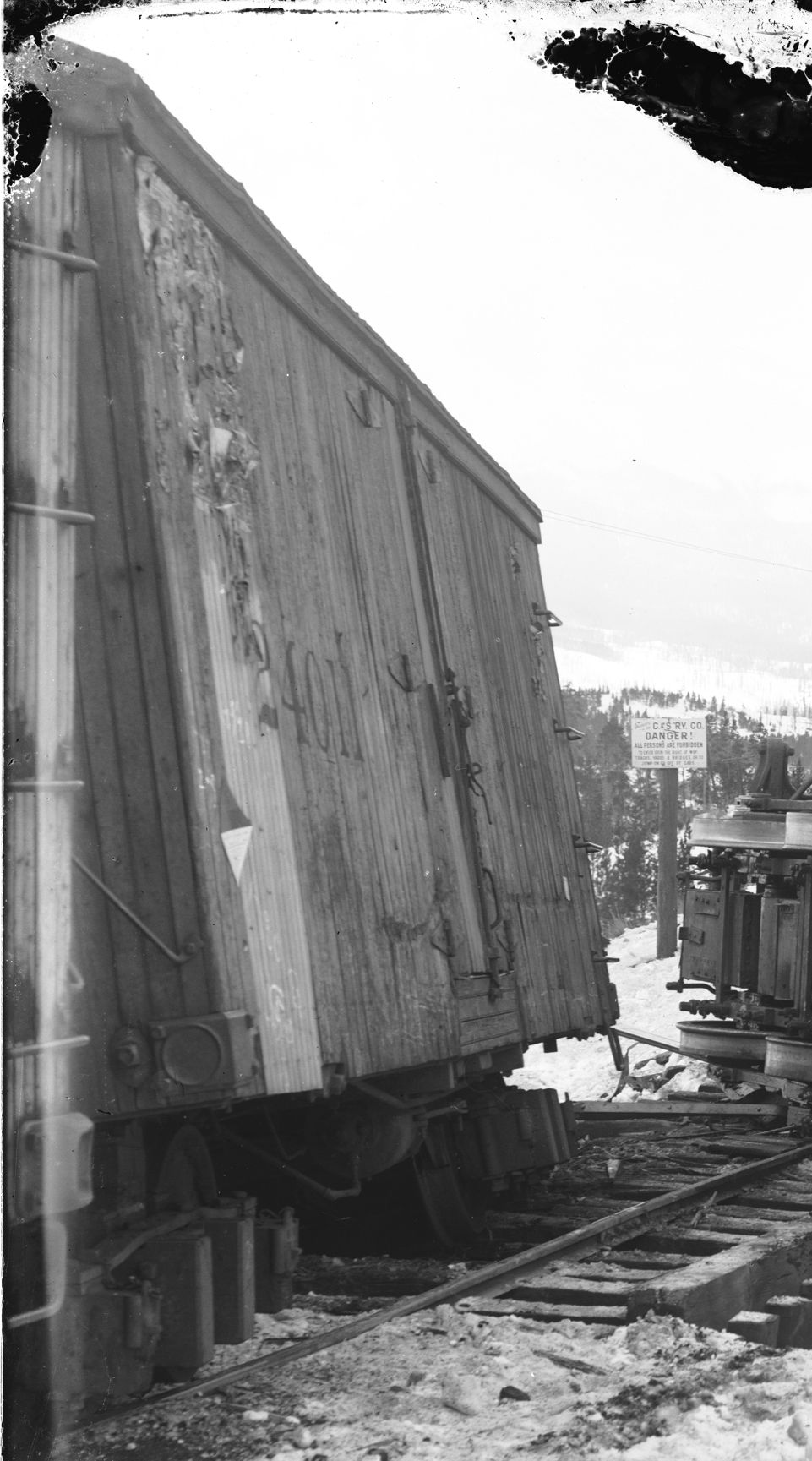 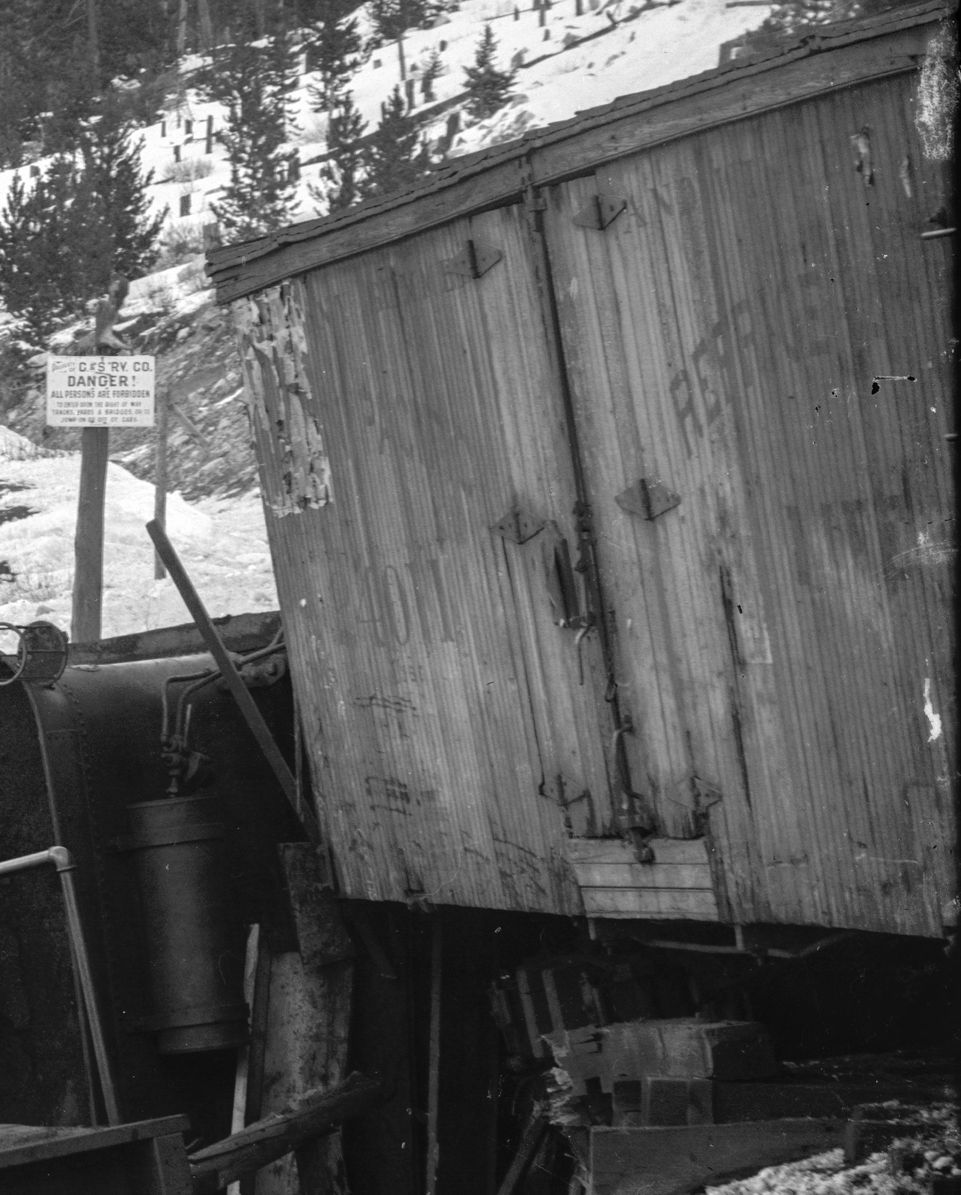  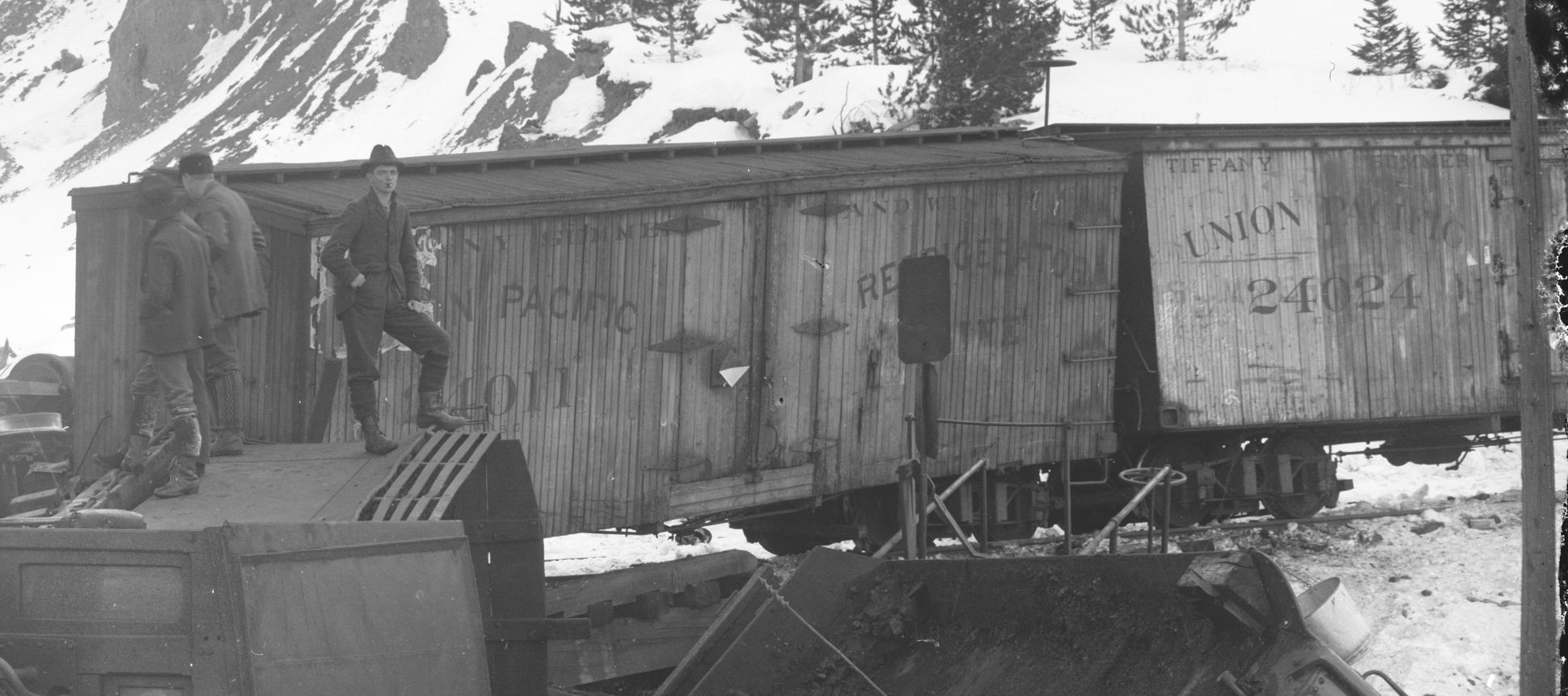 
|
|
This post was updated on .
Wow! Just what the doctor ordered!
This confirms (to me) that neither 26' Tiffany reefer 24011, nor 27' Tiffany reefer 24024 rode on the so-called type A (Litchfield) 12-ton or type B (Peninsular) 20-ton trucks. Both are riding on 14 ton UP type trucks, like those on the 1883 UP coal cars, and like those on flanger 08 at the same wreck. Both cars also seem to have their Tiffany end vents covered with flat plates by this date (February 1901). And the doors have additional hardware not seen on most plans. I've never noticed the little dark note boards, on the left hand door of each car, shaped like a little cheese cutting board. Thanks so much, Todd! I'll try to post more info on the caboose, tomorrow, when I get home from the hospital and have access to my computer. Jim
Jim Courtney
Poulsbo, WA |
|
Jim,
Ahh, our favorite subjects! I believe you are correct on the trucks. Mr. Poole and I have called these the "Type C" trucks for a while. They show up in many pictures of the cars the C&S inherited. They actually seem to be more common than the Type A or B trucks.  Here is a picture of the caboose lettering 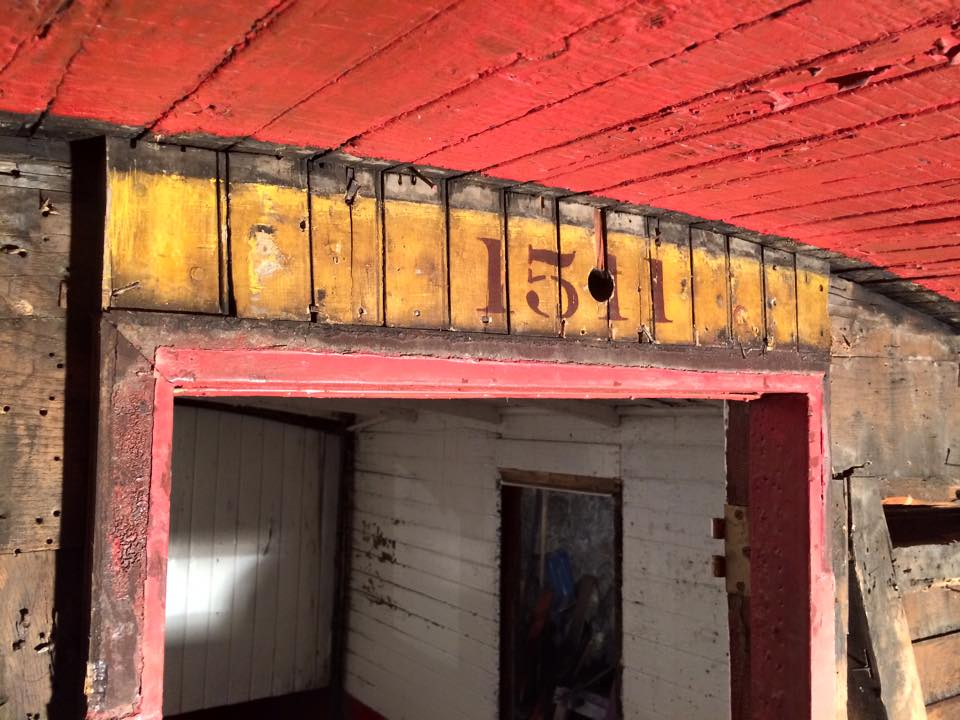 Todd - Thanks for the pictures, Great stuff! Doug
Doug Heitkamp
Centennial, CO |
|
In reply to this post by Todd Hackett
Okay, Todd, I got home from the hospital, dug out my files and fired up my computer to access photos, so let's discuss your original question.
In his multipart series in Outdoor Railroader (August 1995 - January 1996), Derrell Poole identified the "Caboose" in this photo as DSP&P number 79, built in January, 1884. But I doubt that Derrell had access to a photo of this quality resolution (the photos in the articles are near postage stamp size). In the drawings in Part 2 of the series, he drew car 79 with the larger 4-pane, double-hung windows, curved hand grabs, and showed the arched "Caboose" lettering as shown. He felt that the car had quarter-round passenger car style corners and drew the corner platform steps as having the familiar solid sides, as on later C&S cabooses. But in studying the enlargement you provided, it looks to me as if the steps had open sides, as on earlier South Park way cars, like the famous photo of number 64 at Hancock: http://cdm16079.contentdm.oclc.org/cdm/fullbrowser/collection/p15330coll22/id/76301/rv/singleitem   I can't tell from your enlargement about the caboose corners, but I think I see small corner irons at the bottom of the body's corner. The lettering and numbers are hard to read for certainty, as there is some blurring. Derrell read this as a blurred number 79. To me, it looks like at least 3, more likely 4 digits, the two digits to the left being skinny. The arched "Caboose" above isn't that blurred to account for a two digit number being blurred to 3 or 4 digits. And the lettering on the fascia looks more complicated than just DSP&P initials--could it read "Union Pacific" or "Colorado Central"? (DL&G and UPD&G aren't possibilities yet at this date). As to my best guess, there was another class of way cars with 4-pane, double-hung windows, curved hand grabs and corner irons at the bottom of the body corners, the two cars built by the UP in the fall of 1883 for the Colorado Central. After the 1885 renumbering, they became cars 1725 and 1726. IMHO, the photo is of one of the two Colorado Central cars, after renumbering. As to paint scheme, I copied a drawing I believe was posted by the California Railroad Museum--I apologize, I've lost the link:  It is a paint illustration prepared by Randy Hess and others, based on standard UP paint specifications for cabooses in the mid 1880s. The paint scheme closely matches the actual paint uncovered during the C&S 1006 restoration: http://c-sng-discussion-forum.41377.n7.nabble.com/C-amp-S-1006-Restoration-Photos-td879.html  (another view of the scheme worn by DL&G 1511) Anyways, that's my two-cents worth. Before I close let's talk about those two vertical panels suspended in the end railings. Everyone seems to think they were signaling panels, painted red (as above), to alert approaching locomotives from the rear, to avoid collisions at night. In your photo and others, they always look black to me. I know that red on old emulsions was rendered dark, but the two end panels on your photo are much darker than the boxcar red freight cars. Consider: http://cdm16079.contentdm.oclc.org/cdm/singleitem/collection/p15330coll21/id/12601/rec/156  Not only do the end panels look dark (if not black, brown maybe?), but they are pretty scarred and beat up. Since the vertical center line of each panel is exactly 3 feet apart on Derrell's drawings, I think the panels served another function: To keep debris from the car wheels ahead (rocks, gravel, snow, ice, mud) from being thrown up onto the caboose platform and end wall / door. That's right, I believe the South Park invented the predecessor of the modern "mud flap", seen on hundreds of thousands of eighteen-wheelers across the nation today. Thoughts?
Jim Courtney
Poulsbo, WA |
|
In reply to this post by Todd Hackett
BTW, did any one notice the diamond shaped "Time Freight" placards at various places on the two reefers?
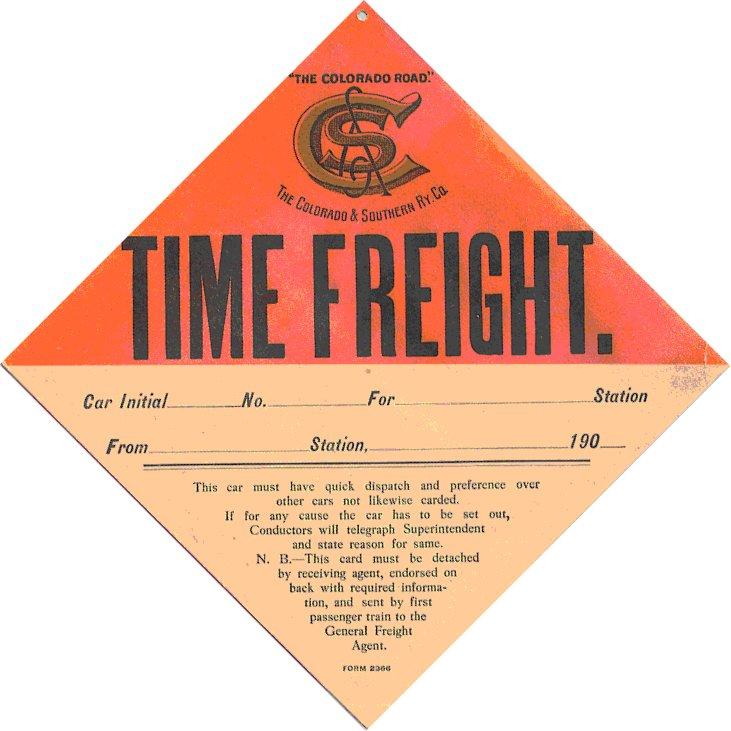
Jim Courtney
Poulsbo, WA |
|
This post was updated on .
I've been looking at Todd's wonderful images of the Tiffanys for the past few days, reviewed Derrell Poole's two articles in The Outdoor Railroader, and Doug and I have exchanged a couple of emails.
A small photograph in Derrell's article showed the Tffany UP 24024 was an unlucky reefer. Although it escaped the Washington Spur wreck of February, 1901, with minimal damage, it was badly damaged in the Riverview wreck a year later, in May, 1902. Nonetheless, it was repaired, subsequently rebuilt and stayed in service. UP 24011 as shown in Todd's images, was damaged enough that, according to Derrell, it was removed from service and never rebuilt. A couple of intersting points that I've gleaned: While not apparent in Todd's images at first glance, 24024 had dark painted ends, matching the roof, with light UP reporting marks on the end. This is more apparent in the photo in Derrell's article. 24011 had light ends and sides (yellow?) with dark UP reporting marks in Todd's images. The photo in Derrell's article shows another small Tiffany (UP 24004) still in UP paint and reporting marks, lying nose down in the South Platte. It, too, has dark ends with white UP reporting marks on the ends, but light (yellow?) sides with UP reporting marks, as those of 24011 above. It was also retrieved from the wreck site, taken to Denver and rebuilt. It seems odd that Tiffany reefers keep showing up in UP paint schemes as late as 1902, when the Trumbull management had run just about every other piece of rolling stock through the paint shop, painting out the UP markings and applying "The Colorado Road" lettering scheme. Derrell discussed C&S AERs which showed the Trumball management aware that the inherited Tiffanys needed rebuilding -- the five new big reefers from St Charles in 1899 were insufficient and not well suited to the South Park Division's track, pretty much confined to Clear Creek service. The surviving Tiffanys were rebuilt in late 1902 and 1903, probably painted orange with black "The Colorado Road" lettering applied after rebuilding (a few before rebuilding, too). Since everyone on the C&S knew that the Tiffanys were slated to have an extensive rebuild, when funds allowed, they were apparently allowed to continue running in trains in their old UP livery for a while. Jim
Jim Courtney
Poulsbo, WA |
«
Return to C&Sng Discussion Forum
|
1 view|%1 views
| Free forum by Nabble | Edit this page |

